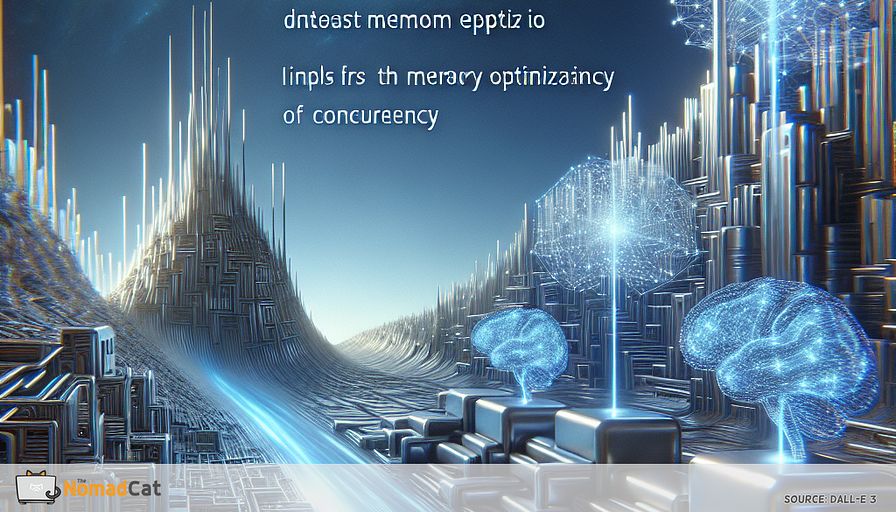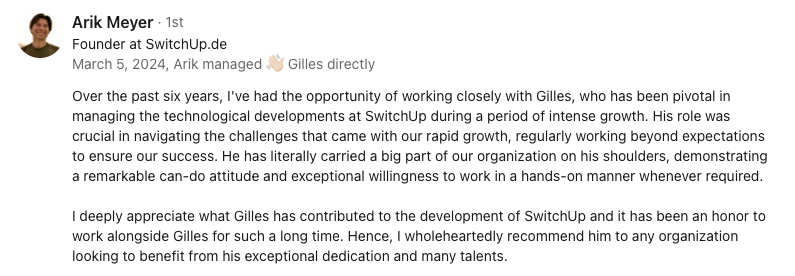Abstract:
In the dynamic realm of artificial intelligence and machine learning, C++ stands out as a pivotal language for enhancing performance, thanks to its speed, efficient memory management, and concurrency capabilities. The article explores how C++ is integral to optimizing AI/ML tasks, particularly in handling large datasets and complex algorithms swiftly. It highlights how C++'s compiled nature offers a speed advantage, crucial for real-time analytics, as exemplified by a CTO's experience in Berlin. Additionally, C++'s ability to manage memory through direct allocation methods and its support for concurrency through multi-threading are essential for maximizing processing efficiency. The language's integration with popular AI frameworks, such as TensorFlow and PyTorch, illustrates its role in improving computational workflows. Tools like pybind11 bridge C++ with Python, maintaining flexibility while ensuring high performance. European startups, like Germany's Konux and Denmark's Corti, demonstrate C++'s real-world applications in enhancing railway efficiency and medical response systems, respectively. These examples underscore C++'s role in driving innovation and meeting compliance and funding challenges in the EU, where its efficiency and security features align with regulatory standards, thus attracting investors. The article concludes that C++ is not merely a technical tool but a strategic asset that enhances scalability, cross-platform adaptability, and market competitiveness, as shown by successful companies like Graphcore and Adyen. Overall, C++ empowers developers to innovate and scale efficiently in the AI/ML sector.
In the fast-paced world of artificial intelligence and machine learning, achieving top performance is a real challenge. With increasing data sizes and complexity, developers need to make every moment count. Enter C++, a language renowned for its speed and efficiency, providing a significant advantage in optimizing AI/ML tasks. This article explores how C++ can be a key tool for enhancing system speed, managing memory effectively, and utilizing concurrency. Whether you're dealing with strict compliance requirements or trying to attract investors, C++ offers a solid solution. Let's see how this language is transforming AI/ML applications and driving innovation across various fields.
C++ for AI/ML Performance Optimization
Using C++ in AI and machine learning isn't just a choice; it's a smart way to boost computational efficiency. When tasks are demanding and every millisecond matters, C++ shines with its excellent performance.
C++ Delivers Speed in AI/ML Tasks
C++ is a compiled language, giving it a speed edge that's crucial in AI/ML settings. Unlike interpreted languages, compiled ones convert code into machine-readable instructions beforehand, speeding up runtime. This matters for AI/ML tasks that need to quickly handle large amounts of data and complex algorithms. In a competitive tech scene, the speed of C++ can be a big plus. For instance, during my time as a CTO in Berlin, C++ helped us process real-time analytics swiftly, ensuring a smooth user experience and fast decision-making. Imagine C++ as the sports car of programming languages—fast, efficient, and always ready to zoom past the competition.
Fine-Tuning Memory Usage with C++
Beyond speed, C++ offers direct memory management, essential for handling large datasets in AI/ML tasks. By giving developers control over memory allocation and deallocation through pointers, C++ allows for precise memory optimization. This control means you can allocate resources according to your needs, ensuring smooth application performance without wasting resources. Beyond memory management, C++ is also excellent with concurrency, which is crucial for AI/ML applications.
Boosting Performance with Concurrency
C++ excels with its support for concurrency through multi-threading. Multi-threading lets developers fully utilize modern multi-core processors, significantly boosting performance. This is especially important in AI/ML models, where multiple data processes need to run simultaneously without slowing down. Using C++'s std::thread and parallel algorithms can greatly improve processing efficiency, making it a top choice for developers looking to optimize AI/ML tasks. However, one challenge with concurrency is managing data dependencies and avoiding race conditions, which can lead to errors if not handled carefully. Next, we’ll see how these benefits apply to real-world applications within AI frameworks.
Integrating C++ with AI/ML Frameworks
Combining C++ with popular AI/ML frameworks is a strategic move to maximize performance and efficiency. Knowing how to integrate them well can greatly improve computational workflows in demanding settings.
Streamlining Integration with Libraries
When startups in Europe aim to scale AI/ML applications, using existing C++ libraries like TensorFlow C++ API and PyTorch C++ frontend (LibTorch) is a valuable strategy. These libraries are designed to tap into C++'s raw performance, enabling efficient computation and model deployment.
- Efficiency in Computation: TensorFlow’s C++ API allows for smooth execution of AI models, enhancing speed and efficiency vital for large-scale processing.
- Overcoming Python's Overhead: PyTorch’s LibTorch helps in environments where Python’s overhead might be an issue.
Consider a startup that integrated C++ with PyTorch to improve model training times. By switching from Python bindings to C++ code, they saw significant improvements in latency-sensitive applications. This integration not only improved their processing capabilities but also allowed more optimizations through C++'s extensive library support.
Bridging C++ and Python with Pybind11
While C++ offers unmatched performance benefits, Python's flexibility is still crucial. Tools like pybind11 are key in merging these advantages, allowing the development of high-performance applications in a Python-friendly setup. By wrapping C++ code for use in Python projects, pybind11 enables efficient execution without losing Python’s ease of use.
- Challenges and Solutions: Integrating C++ with Python using pybind11, developers often face challenges like managing data types and ensuring thread safety. However, these are addressed with pybind11's comprehensive documentation and community support, easing the transition between C++’s performance and Python’s versatility.
This setup is particularly useful in real-world applications like data analysis platforms, where high-speed processing pairs well with Python's extensive libraries. Developers can maintain a strong workflow without sacrificing speed, balancing performance with development ease.
Showcasing Success: European Startups Leading the Way
Real-world applications of C++ integration show its impact, especially in European startups utilizing its capabilities to drive innovation and efficiency.
Elevating Railway Efficiency with Konux
In Germany, Konux demonstrates effective C++ integration within their AI-driven railway efficiency solutions. By using TensorFlow’s C++ API, they process real-time data with impressive accuracy. This provides predictive maintenance, reducing downtime and maintenance costs greatly.
- Impact on Industry: Konux’s approach shows how C++ can be used for real-time applications, helping the railway industry optimize operations and improve service reliability. Their use of C++ highlights its key role in handling data-heavy tasks with speed and precision.
Advancing Medical Response with Corti
Corti, a Danish startup, uses C++ to improve model inference efficiency in medical applications. By focusing on high-efficiency audio processing, C++ supports life-saving decisions during emergency calls. The precise and quick computation C++ offers is crucial in turning medical data into actionable insights.
- Benefits to Healthcare: Corti’s use of C++ for model inference shows its potential in critical settings where timeliness and accuracy are crucial. Reflecting on this, it's awe-inspiring to think about how C++ isn't just enhancing tech but playing a pivotal role in saving lives, truly showcasing its impact beyond just performance metrics.
These examples illustrate how C++ integration not only boosts performance but also drives sector-specific innovations, aligning with a broader vision of tech advancement and industry efficiency.
Building Scalable Systems with C++
Scalability is crucial when developing AI/ML systems, and C++ supports building scalable solutions effectively. One of C++'s strengths is its support for a modular architecture, allowing developers to design systems with independently scalable parts. By breaking down a system into smaller, manageable modules, developers can scale individual system parts as needed, not the whole system, leading to more efficient resource use. This modular approach not only simplifies scaling but also improves system maintenance and flexibility.
Moreover, C++'s cross-platform capabilities enhance its scalability potential. Its compatibility across different environments makes it a versatile choice for deploying AI/ML systems on various platforms, from local servers to cloud-based infrastructures. Popular cross-platform tools and libraries like Boost and CMake ease this adaptability by allowing seamless integration and execution across different operating systems. This versatility ensures AI/ML solutions can expand their reach without being tied to a single platform, supporting horizontal scaling.
Resource Optimization in C++
Optimizing resources is crucial in AI/ML systems where memory and processing power are in high demand. C++ offers tools like smart pointers and custom allocators, greatly improving memory management. Smart pointers like std::shared_ptr and std::unique_ptr prevent memory leaks by managing the lifetime of dynamically allocated objects, while custom allocators reduce overhead by streamlining memory allocations and deallocations. These efficient memory management strategies are key in improving system performance, especially with large datasets.
Parallel processing is another technique that maximizes C++'s resource efficiency, important for handling large-scale computations typical in AI/ML tasks. Libraries like OpenMP and Intel TBB provide the necessary infrastructure for multi-threading, allowing applications to run multiple operations at once. This not only speeds up processing times but also optimizes CPU usage, making the most of available hardware resources. By using parallel processing, developers can ensure their C++ applications perform optimally, even under heavy computational loads.
Overcoming Compliance and Funding Challenges
Navigating the complexities of the European Union's compliance and funding landscapes presents significant challenges for AI/ML developers. Yet, using C++ strategically offers solid solutions to these issues, aiding in regulatory compliance while also boosting product attractiveness to investors.
Compliance with EU Standards
C++’s capabilities in efficient data processing and concurrency are valuable assets for meeting the EU's strict regulations, like GDPR. The language's high-performance execution ensures data requests and portability requirements are met quickly and efficiently, playing an important role in these data-sensitive environments. With the ability to handle large datasets swiftly, C++ facilitates seamless processing of user data requests, a key requirement under GDPR guidelines.
Moreover, C++ has a suite of security features, including advanced cryptographic libraries like OpenSSL and Crypto++, that align closely with EU standards for data protection. These libraries empower developers to implement strong encryption and secure data handling processes, safeguarding sensitive information and reinforcing compliance. This secure data handling not only meets but often exceeds the rigorous standards set by EU regulations, making C++ a reliable ally in navigating the compliance landscape.
Attracting Funding
Beyond compliance, C++'s impressive performance capabilities, characterized by efficient memory management and rapid processing speeds, significantly boost a product's viability to investors. The language’s ability to maximize resource utilization makes it an attractive foundation for AI/ML solutions, appealing to stakeholders focused on product scalability and operational efficiency. By ensuring applications run smoothly even at scale, C++ adds a reliability and performance layer that investors find compelling.
Successful funding examples, like those from European startups, show how C++ has been key in securing significant investments. These companies have used C++ to optimize machine learning models, showing the language's role in creating high-performance products that catch investors' attention. The alignment of C++'s strengths with investor priorities in terms of scalability and efficiency showcases its powerful role in the tech startup ecosystem, providing a competitive edge in the quest for funding. It's exciting to see how C++ innovations can lead to groundbreaking advancements, igniting enthusiasm for disruptive technology.
Success with C++ in European Innovation
In the fast-paced world of AI and machine learning, European startups are finding innovative ways to use C++ to enhance product development and market positioning. This strategic use of C++ not only optimizes algorithms for speed and memory management but also significantly boosts the adaptability of products across multiple platforms.
C++ Boosts Product Development
C++ is crucial in fine-tuning algorithms for speed and efficient resource management, which is essential to stay competitive in the AI/ML industry. In the crowded tech marketplace, startups need every edge they can find, and C++ delivers by optimizing algorithms that result in faster, more efficient AI applications. This is more than a technical benefit—it's a strategic advantage that positions products favorably against competitors. By ensuring applications are not just functional but also superior in performance, C++ helps startups stand out, attract customers, and solidify their market position.
Beyond these optimization benefits, C++ provides significant cross-platform capabilities, a critical factor for startups looking to adapt their technologies for diverse environments. Whether integrating with existing legacy systems or developing new applications that must operate seamlessly on various platforms, C++ builds products that are both robust and flexible. This adaptability widens the technology’s reach, allowing startups to tap into broader markets and diversify application scenarios, proving that versatility is as crucial as performance in gaining a market foothold.
Startup Success Stories: C++ in Action
The power of C++ isn't just theoretical—startups like Graphcore and Adyen showcase how C++ can drive significant advancements and maintain competitive advantages. Graphcore, based in the UK, employs C++ to optimize AI model performance, integrating it deeply within their IPU hardware for remarkable processing efficiency. This success story underscores the effectiveness of C++ in pushing the boundaries of what hardware can achieve, making their technology a sought-after solution in the AI hardware market.
Similarly, Adyen, the global payment company with roots in the Netherlands, uses C++ to enhance product scalability and performance. These enhancements ensure that as the company grows, its systems can handle increased load and complexity without sacrificing speed or reliability. This capacity for sustained growth and instant adaptability sets Adyen apart in the competitive financial tech scene, providing a continuous edge over their rivals.
These case studies highlight how C++ not only facilitates immediate performance gains but also serves as a blueprint for sustained competitive advantage. Startups leveraging C++ find themselves well-equipped to tackle both the current challenges and future opportunities in the ever-evolving AI/ML landscape.
In the journey of AI and machine learning, C++ emerges as a strong ally, offering unmatched speed, memory control, and concurrency. Its role in optimizing AI/ML tasks is not just a technical choice but a strategic advantage that boosts innovation and efficiency. C++ empowers developers to create scalable, cross-platform solutions, while ensuring compliance and attracting investor interest. From improving railway efficiency to advancing medical response, its impact is wide-ranging and significant.













